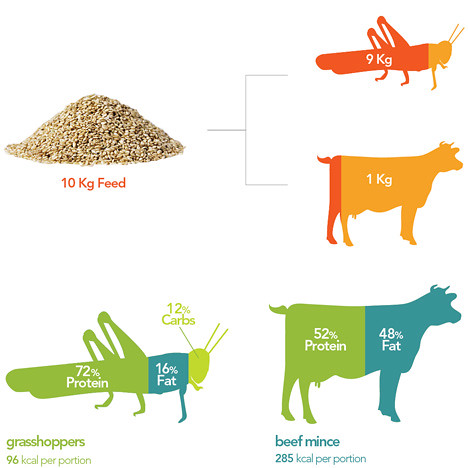Tuesday, January 19, 2016
Maybe Its Time To Swap Burgers For Bugs

Edible insects are great alternatives to conventional sources of meat as they’re cheap, plentiful and excellent sources of protein and fat, as well as vitamins and minerals.
Why eat insects?
Food demand is accelerating, and agricultural productivity cannot keep up. By 2050 global demand is set to double to 40 giga-calories per day, and much of this increase will be due to demand for meat.
The livestock industry is notoriously resource-hungry, consuming a third of all crops and requiring 70% of agricultural land. It also accounts for 20% of greenhouse gas emissions, through production, transport and animal digestive gas.


It is against this backdrop that edible insects offer an exciting alternative. They are extremely efficient at turning feed into meat and can be farmed at a very high density. This means that their embodied energy is low—a tenth of that of beef cattle—and that at high volumes they are very cost efficient. Taking their nutritional benefits into consideration as well, it is easy to understand why the UN, the EU, and the Dutch government are some of the major players investigating the potential of edible insects.
Top Edible Insects
Top insects protein providers are the grasshoppers known as chapulines in Mexico that have a protein content of up to 77.13%. Grasshoppers are a common snack in Mexico. grasshoppers are usually eaten with guacamole and tortillas.
We can also list the Mopane worms have 31 to 77 mg of iron per 100 grams. Black soldier flies maggots contain 42% protein.
In many countries, eating insects doesn’t raise eyebrows. Insects are a major source of food in many countries including Japan, China, Thailand, Cambodia, Australia, Uganda, Botswana, Peru, Venezuela and Mexico.
The list of 2000 edible insect species worldwide, Enjoy : http://bit.ly/17DWQWG
Subscribe to:
Post Comments (Atom)
No comments:
Post a Comment